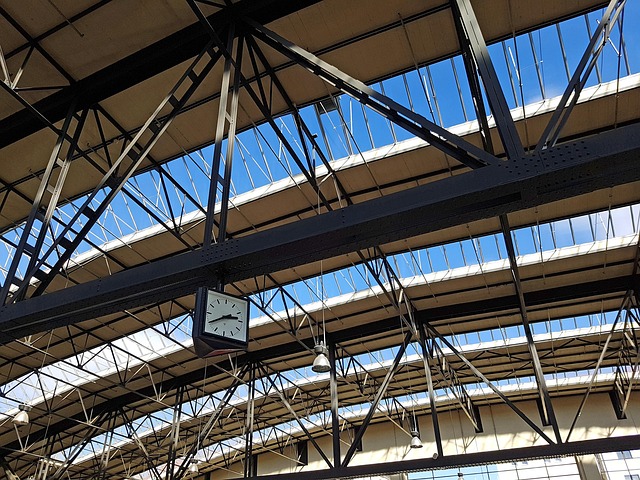Retrofitting older buildings with 3D rebar modeling enhances structural integrity and energy efficiency while preserving historical charm. This technology optimizes material use, reduces waste, and cuts costs by providing accurate digital models for reinforcement bar placement. Detailed surveys and 3D rebar modeling enable professionals to assess conditions, predict load-bearing capacities, and develop tailored strategies for effective, respectful transformation that improves performance and lifespan. Advanced technologies in building restoration contribute to a greener environment and preserve architectural heritage through precise planning and eco-friendly practices.
Retrofitting and rehabilitating existing buildings offers a sustainable and cost-effective approach to extend their lifespan. This article delves into the essential concepts, remarkable benefits, and cutting-edge techniques of retrofitting, with a special focus on 3D rebar modeling—a game-changer in structural rehabilitation. From understanding key factors for successful retrofit projects to exploring modern, eco-friendly solutions, this guide equips professionals with valuable insights for revitalizing older structures.
Understanding Retrofitting: Essential Concepts and Benefits
Retrofitting, a process of enhancing and modernizing older structures, has emerged as a sustainable and cost-effective solution for existing buildings. It involves integrating new materials and technologies while preserving the original architectural essence, creating a harmonious blend of old and new. The concept is not merely about updating aesthetics but also improving structural integrity, energy efficiency, and overall functionality.
One crucial aspect of retrofitting is 3D rebar modeling, which plays a pivotal role in reinforcing concrete structures. This advanced technique allows for precise planning and placement of reinforcement bars, ensuring enhanced load-bearing capacity and improved durability. By leveraging 3D modeling, engineers can optimize the use of materials, reduce costs, and minimize waste, making retrofitting an environmentally friendly option. The benefits extend beyond structural enhancements; energy-efficient systems, better insulation, and smart technology integration contribute to a more sustainable and comfortable living or working environment.
3D Rebar Modeling: A Game-Changer in Structural Rehabilitation
In the realm of structural rehabilitation, 3D rebar modeling is revolutionizing the way existing buildings are restored and reinforced. This cutting-edge technology allows engineers and contractors to create precise digital representations of a building’s internal structure, including its reinforcement bars (rebar). By visualizing the entire system in three dimensions, professionals can more effectively plan and execute repairs, ensuring the structural integrity of the building while minimizing disruption.
Moreover, 3D rebar modeling facilitates better material allocation and cost estimation. With accurate models, workers can precisely cut and place rebar, reducing waste and labor costs. This game-changer in construction not only streamlines the retrofitting process but also contributes to more sustainable building practices by optimizing material use. In today’s digital era, 3D rebar modeling is a testament to how technology is enhancing and simplifying the art of structural rehabilitation.
Evaluating Existing Buildings: Key Factors for Successful Retrofit
When evaluating existing buildings for retrofit and rehabilitation, several key factors come into play to ensure successful and sustainable transformation. A comprehensive understanding of the building’s structural integrity, architectural design, and historical context is imperative. Through detailed surveys and 3D rebar modeling, professionals can accurately assess the existing conditions, identifying potential challenges and opportunities unique to each structure.
This process involves examining the building’s framework, including its foundation, walls, floors, and roof, for any signs of deterioration or structural weaknesses. By integrating advanced modeling techniques, architects and engineers can predict load-bearing capacities, identify areas requiring reinforcement, and develop tailored retrofit strategies. This holistic approach ensures that rehabilitation efforts are both effective and respectful of the building’s legacy, resulting in enhanced performance, improved aesthetics, and extended lifespan.
Sustainable Solutions: Modern Techniques for Building Rehabilitation
In today’s digital era, sustainable solutions have become a cornerstone in building rehabilitation and retrofitting. Modern techniques leverage advanced technologies like 3D rebar modeling to enhance structural integrity while minimizing environmental impact. This innovative approach allows for precise planning and execution, ensuring that every element of the building is optimized for efficiency and longevity.
By integrating these cutting-edge methods, builders can revitalize old structures, making them energy-efficient and eco-friendly. 3D rebar modeling facilitates the design and installation of reinforced concrete elements with unparalleled accuracy, reducing waste and promoting a more sustainable construction process. This, in turn, contributes to a greener built environment, reflecting a testament to our commitment to preserving historical landmarks while embracing progressive architectural practices.
Retrofitting and rehabilitating existing buildings offers a sustainable and cost-effective approach to modernizing structures. By understanding the essential concepts and benefits of retrofitting, utilizing innovative tools like 3D rebar modeling for structural rehabilitation, and evaluating key factors during assessment, professionals can successfully navigate this process. Embracing sustainable solutions further ensures these historic landmarks thrive in today’s world, showcasing a harmonious blend of preservation and progress. This comprehensive approach to building rehabilitation not only strengthens our built environment but also fosters a greener future.
